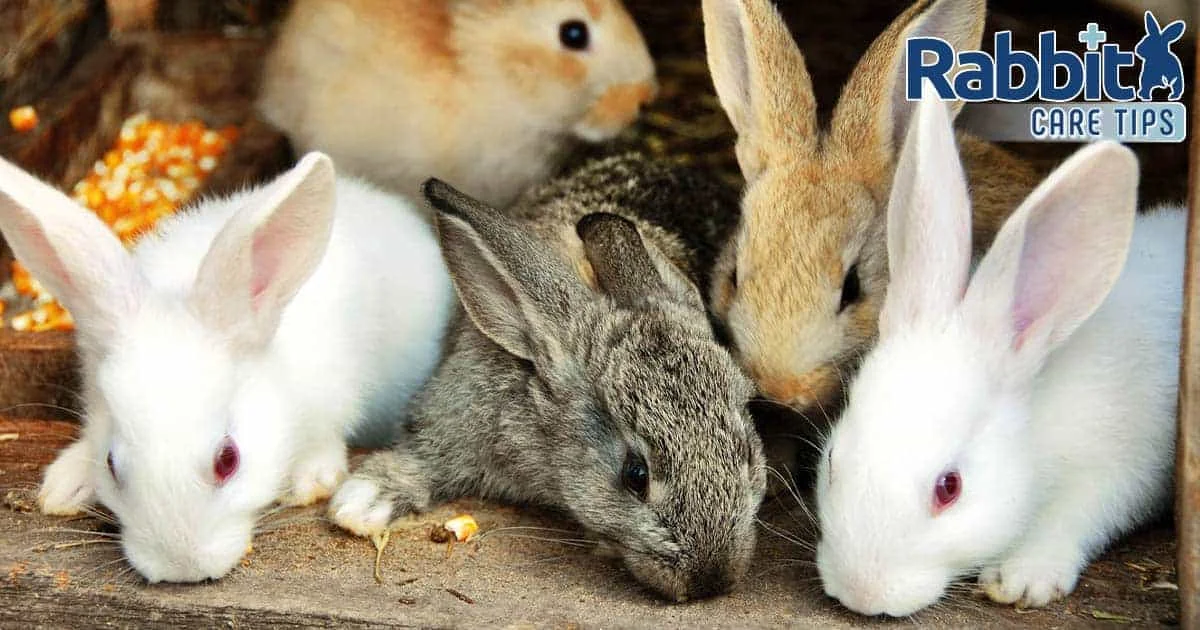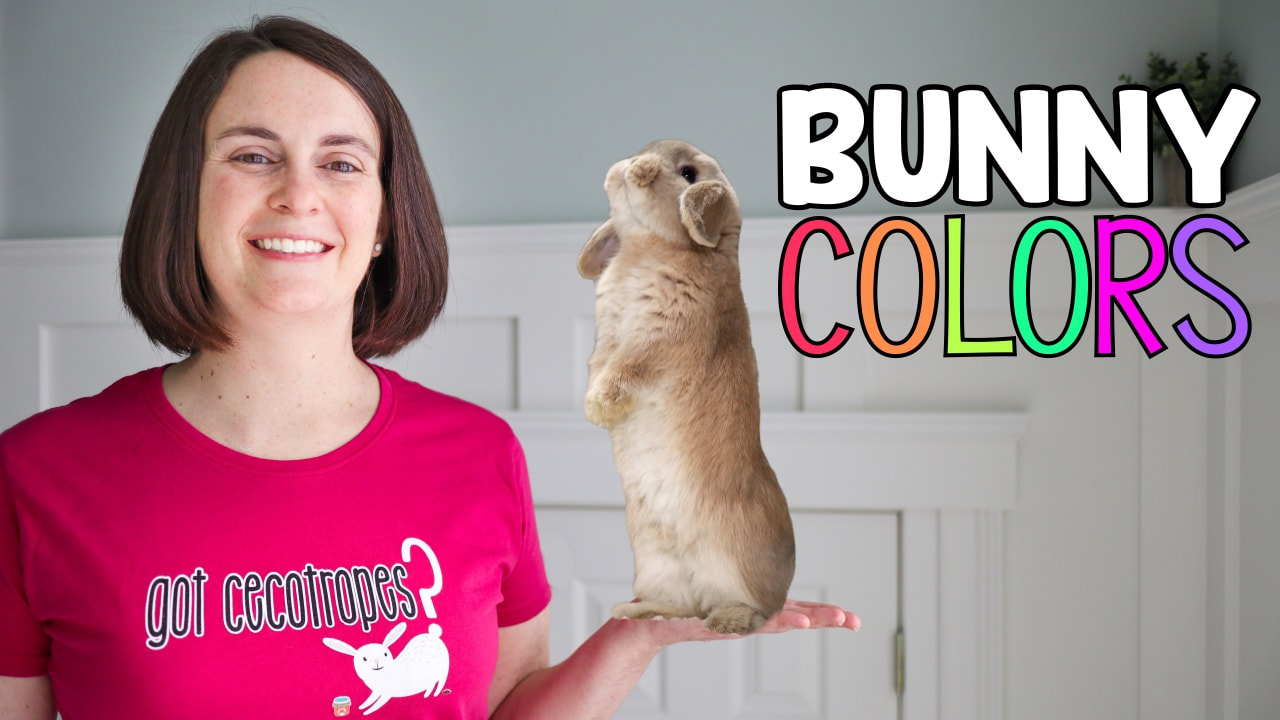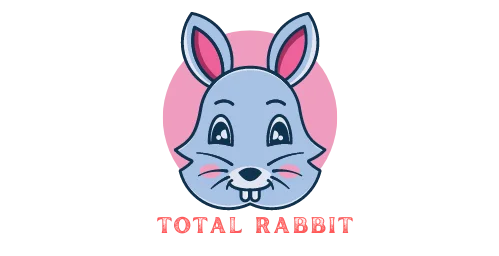Rabbit Color Genetics: The Complete Guide

Rabbit color genetics can be a confusing topic, but it doesn’t have to be! This guide will explain everything you need to know about rabbit coat colors and patterns. We’ll cover the basics of genetic inheritance, the different types of alleles that produce different colors, and how to predict the offspring of two rabbits with different coloring.
By the end of this guide, you’ll be a experts on rabbit color genetics!
As a pet owner, you may be wondering about the different colors your rabbit can be. You might even be thinking about breeding rabbits and want to know what color combinations are possible. Regardless of your reasons, this guide will teach you everything you need to know about rabbit color genetics.
Rabbits come in a wide variety of colors, from white to black and everything in between. A rabbit’s coat color is determined by two sets of genes – one from each parent. The first set of genes determines the base color of the coat, while the second set determines which pattern the coat will have.
There are three base colors that all other colors are derived from: agouti, black, and blue. Agouti is the most common base color and is characterized by having bands of light and dark fur on each individual hair shaft. Black rabbits have an entirely black coat, while blue rabbits have a grayish-blue coat.
There are also several patterns that can occur in combination with any of the three base colors. The most common pattern is called “self” which simply means that the entire coat is one solid color with no markings or patterns. Other patterns include “pointed”, “broken”, “banded”, and “spotted”.
Now that you understand how a rabbit’s coat color is determined, let’s take a look at some of the most popular combinations:
– Black & White: One of the most classic combos, this pairing results in a stark contrast between the two colors.
– Chocolate & White: This combo gives a rich chocolate brown hue with crisp white markings.
– Blue & White: As mentioned before, blue rabbits have grayish-blue fur instead of true blue fur. When paired with white, this creates a beautiful silver effect.

Credit: www.ohiohollandlops.com
What Determines the Color of a Rabbit?
The color of a rabbit is determined by its genetic makeup. Each rabbit has two sets of genes, one from each parent, that determine the final color of the animal. The alleles (variants) for each gene are what give rise to the different colors we see in rabbits.
For example, the allele for black fur is dominant over the allele for brown fur. This means that if a black-furred rabbit and a brown-furred rabbit mate, their offspring are more likely to have black fur than brown fur. There are many different alleles that can produce a wide variety of colors in rabbits.
What Color is Dominant in Rabbits?
There are a variety of colors that rabbits can be, but the most dominant color is white. This is due to the fact that albino rabbits, which are all white, are the most common type of rabbit. There are other colors that are also fairly common, such as black and brown.
However, there are many more rarer colors as well, such as blue and red.
Why Will Bb Rabbits Have Black Color Rather Than White Color?
There are many reasons why a BB rabbit might have black fur instead of white. Black is a recessive gene, so it’s possible that both parents carried the black gene and passed it on to their offspring. Or, the bunny could be born with black fur if one parent has the black gene and the other parent has no color gene (which is common in rabbits).
Finally, environmental factors like stress or diet can sometimes cause a rabbit’s coat to change color from white to black.
Which Color Coat in Rabbits is the Most Recessive?
When it comes to coat color in rabbits, there are a few different factors at play. One of the main factors is whether the rabbit has a single coat or a double coat. Double-coated rabbits will have a more recessive coat color, while single-coated rabbits will be more likely to express their dominant coat color.
Another factor that can affect coat color is whether the rabbit has any white markings on their fur. White markings are usually caused by a gene mutation and are typically considered to be more recessive than other colors.
So, which color coats are most recessive?
That really depends on the specific genes involved and how they interact with each other. However, some of the most common recessive colors include blue, chocolate, and lilac.
Quick Rabbit Color Genetic Overview
Rabbit Color Genetics Calculator
Rabbit Color Genetics Calculator
With so many different rabbit colors available, it can be hard to keep track of what color your rabbits will be. That’s where a Rabbit Color Genetics Calculator comes in handy!
This tool can help you predict the likelihood of certain coat colors based on the genetics of the parents.
To use a Rabbit Color Genetics Calculator, you’ll need to input the genotypes of the parents. The genotype is the combination of alleles (genes) that determines an individual’s phenotype (physical appearance).
For example, if both parents are black rabbits, their genotypes would be “BB” or “Bb”.
Once you have inputted the parent’s genotypes, the calculator will provide you with a percentage probability for each possible offspring color. For example, if both parents are black rabbits (BB or Bb), there is a 75% chance that their offspring will also be black.
However, there is also a 25% chance that their offspring could be chocolate (bb).
So, if you’re ever wondering what color your rabbits might be, make sure to use a Rabbit Color Genetics Calculator!
Rabbit Breeding Color Calculator App
If you’re thinking about breeding rabbits, there’s a new tool that can help you choose the right colors for your litter. The Rabbit Breeding Color Calculator app is now available for iPhone and iPad.
This app was created by rabbit breeders to help plan litters with specific color combinations in mind.
With over 16 million possible color combinations, the possibilities are endless! And if you’re not sure what colors you want, the app also includes a random color generator.
The Rabbit Breeding Color Calculator app is available for $1.99 from the App Store.
Rabbit Color Genetics Otter
Rabbits come in a wide variety of colors and patterns. Some of these are the result of specific genes, while others are the result of random mutations. The “otter” coloration is one that is caused by a particular gene.
Otter rabbits have a unique fur pattern that is characterized by dark guard hairs and light undercoat. The tips of the guard hairs are often darker than the base color, which gives the rabbit a “ticked” appearance. Otter rabbits can be any color, but they are most commonly found in shades of brown or black.
The otter coloration is caused by a mutation in the agouti gene. This gene controls the distribution of pigment in the hair shaft. In otter rabbits, this distribution is uneven, which creates the ticked appearance.
This type of coloration was once quite rare, but it has become increasingly popular in recent years due to its unique look. If you’re interested in owning an otter rabbit, be sure to do your research and purchase from a reputable breeder.
Harlequin Rabbit Color Genetics
Rabbits come in a wide variety of colors and patterns. One of the most popular color patterns is the harlequin rabbit. Harlequins are characterized by having two large patches of color, one on each side of their body.
These patches can be any color, but are typically black and white or orange and white.
The harlequin pattern is caused by a mutation in the gene that controls coat color. This mutation results in a loss of pigment cells in the hair follicles, which produces the characteristic patched appearance.
The degree to which this loss of pigment occurs can vary, resulting in different degrees of white spotting.
While the exact origins of the harlequin pattern are unknown, it is thought to have originated in France sometime during the 19th century. The first recorded mention of a harlequin rabbit was in 1887, although it is possible that these rabbits existed prior to this time.
Today, harlequin rabbits are one of the most popular breeds worldwide. They make excellent pets due to their friendly nature and unique coloring. If you’re considering adding a furry friend to your home, be sure to check out some local breeders for healthy and beautiful harlequin rabbits!
Is Rabbit Color Genetics Related to their Behavior and Discipline?
Is Rabbit Color Genetics Related to their Behavior and Discipline?
The complete guide to disciplining rabbits may not directly correlate with their color genetics. Rabbit coat color is determined by genetics, while behavior and discipline can be influenced by a variety of factors such as upbringing, socialization, and individual personality. It is important to focus on positive reinforcement techniques and understanding the specific needs of your rabbit when it comes to disciplining them effectively.
Conclusion
Rabbit color genetics is a complex topic, but this guide will help you understand the basics. Rabbit coat colors are determined by two types of pigment: eumelanin and phaeomelanin. Eumelanin produces black and brown pigments, while phaeomelanin produces red and yellow pigments.
The genes that control these pigments are located on the X chromosome.
There are four main categories of rabbit coat colors: self, agouti, shaded, and pointed. Self-colored rabbits have a single color all over their body.
Agouti rabbits have banded hairs with each hair having multiple colors. Shaded rabbits have a dark base color with lighter tipping on their guard hairs. Pointed rabbits have a light base color with darker points on their ears, face, feet, and tail.
Rabbit breeders can use color genetics to produce desired coat colors in their litters. For example, two black rabbits bred together will always produce black offspring. However, if one parent is black and the other is agouti, they will produce 50% black offspring and 50% agouti offspring.
